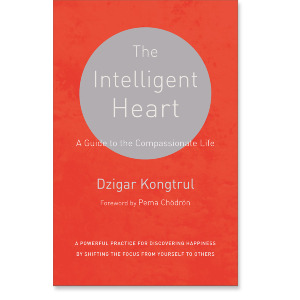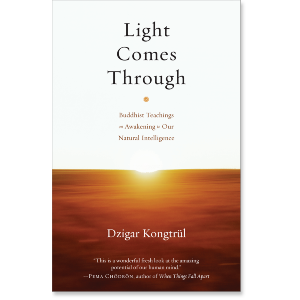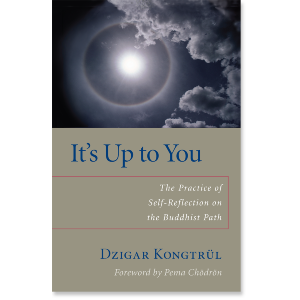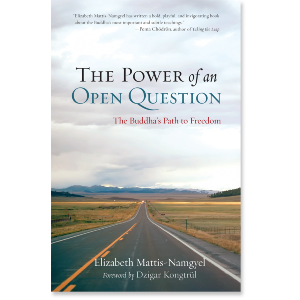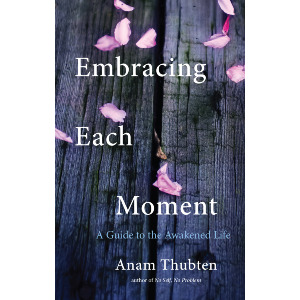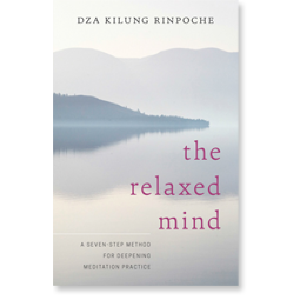This July, I attended the Nyingma Summer Seminar at the Mangala Shri Bhuti retreat land in Ward, Colorado, with Dzigar Kongtrül Rinpoche, Elizabeth Mattis Namgyel (wife), and Dungse Jampal Norbu (son). Over one hundred attendees with varied demographics sat daily meditation sessions, participated in the teachings, endured periods of silence and the usual “plain but healthy” retreat food. My experience was resoundingly positive, as we had an opportunity to explore the depths of many traditional and profound Buddhist teachings. All three vehicles were presented consecutively, beginning with foundational Buddhism the first two days, Mahayana philosophy and practice the next four days, and finally the Vajrayana the last three days. Among the essential teachings were the four noble truths, the noble eight-fold path, impermanence, suffering, the Twelve Nidānas and karma, emptiness, compassion, the Pāramitās, guru devotion, and pure perception. Each yana was explained concisely and flowed naturally into the next. When a point was given regarding the Mahayana, we would often reflect back to the foundational view and practice in order to explain clearly its essential role in leading to true Mahayana understanding and then, in turn, how Vajrayana rests on Mahayana foundations. The Mahayana teaching of Bodhicitta, in its prerequisite role leading into Vajrayana, was the most emphasized aspect of the Buddhist path presented by Rinpoche and supporting student teachers. Bodhicitta, the heartfelt longing to attain enlightenment for the benefit of all sentient beings, permeated the teachings, teachers, and students of the Mangala Shri Bhuti sangha as the ground we worked upon.
At this point in my spiritual journey, I felt ready for a jump in my understanding of Bodhicitta. Six months prior to the retreat I began reading Rinpoche’s book, The Intelligent Heart, which I felt generated a major internal shift; I was, therefore, excited to attend his teachings in person. Thus far my Buddhist practice consisted mostly of calm-abiding, self-kindness practices, and Buddhist contemplations on impermanence, suffering, and emptiness. I had been introduced to teachings on compassion for others, such as Tonglen (exchanging self for other) and Lojong (mind training), but I was always content with sitting meditation, counting on the altruistic mind to arise organically. Although this may be an accepted approach, the lack of formal bodhicitta practice hindered its cultivation, resulting in a staleness in my shamatha and contemplations. As with many practitioners, I felt something was missing. I have heard of equating the spiritual path with the healing of the body after injury. Through the help of a physician, we can approach the body‘s illness holistically; rarely is there only one thing ailing our body or one problem that screams for our attention and care. Similarly, the spiritual journey presents us with a variety of different neuroses and energy blocks where we must exercise certain muscles and take different medicines accordingly. Bodhicitta and Tonglen were the medicines I needed most at this point on my path, with Rinpoche acting as the physician and the Sangha as the proven test trials.

Rinpoche’s confidence in the effectiveness of the dharma and of bodhicitta to unravel ego were most inspiring for me. Rinpoche speaks with an eloquent, gentle, and straightforward clarity. In his books and in person, he exudes trust in the teachings and a confidence in his students‘ ability to progress, given only that they possess diligence, correct view, and proper motivation, which he reasserts with every teaching. Rinpoche’s style is captured well in the following passage from his book Light Comes Through:
“Buddhist meditators often experience doubt in their practice. They expect to have strong practice results all of the time and get disheartened when they don’t. One of my teachers, Khen Rinpoche, once said that when you put an apple seed in the ground, first a shoot sprouts; we don’t expect to see blossoms and apples right away. But the sprout encourages us—from something small, dry, hard, and round emerges a green root. It shows us the possibility of a tree. On the spiritual path it is the same. When we apply ourselves, we begin to witness small changes along the way. We may simply hear a teaching on impermanence and see from our experience that it is true. As we continue to apply the teachings, we begin to also see our mind becoming freer and more wholesome, peaceful, and clear (pp. 78 - 79).”
Furthermore, while being rooted in the heart, Rinpoche also writes in classic Nyingma style: “Here is the view, cultivate right motivation, try these practices, see the results.” This style is apparent in his writings and workshops, yet it is common for Rinpoche to revert back and forth from a classic style to less formal, as in the passage above. All in all, devotion did not turn into adulation, as Rinpoche habitually turned it back on his students to develop independence in their practice and to rely on their own strength, not just on the guru blessings. Additionally, I found Elizabeth and Jampal both added so much to the program, unpacking Rinpoche’s teachings in their subsequent talks, answering questions, and contributing their own insights and practice experience.
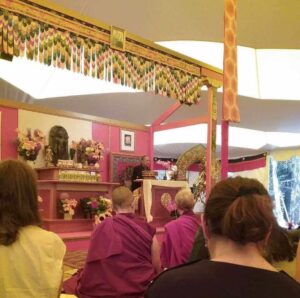
Meanwhile, it was uplifting seeing everyone engaged for such long talks. Often, though I was fully engaged, it would be some minutes after leaving the shrine tent that the magnitude of what had been transmitted became apparent through direct experience. A few days into the retreat I had one such experience. After leaving a teaching in the shrine tent, I made myself some tea and used the restroom, setting my tea outside the stall on a railing. When I came out a mosquito had drowned in my tea, which struck me on a deep emotional and spiritual level. Among the topics discussed that morning, some intellectually denser than others, compassion and the tender heart were certainly among them. I remember feeling so affected by this tiny insect. Never had I felt so vulnerable and conscientious of such a small being. There was a feel of equanimity, that this mosquito, this bloodsucking, ugly parasite deserved every bit as much love and attention as I did. I felt this insect just like me so wished to be happy and avoid suffering, and it had quite simply come to a rough point in its karmic disposition. Sure, intellectually I recognized, on a conventional level, the insignificance compared to a human passing away, but somewhere unspoken, deep in my heart, there was a feeling of complete equanimity. It wasn’t that the death of a mosquito was such a big deal, but rather that for a period of time I was able to care about something, however small, more so than my own self-attachment. I felt it gave meaning to my morning and hopefully to the mosquito’s life as well. I remember feeling a lot of space and tender heartedness for beings who so desperately cling to life’s fleeting hooks of enjoyment. All the while I felt appreciation for my good conditions and my encountering of spiritual practice in the vision of directing my life toward eventual liberation.
From attending the Nyingma Summer Seminar, I feel Mangala Shri Bhuti is a great example of a modern Western sangha. The retreat atmosphere and the support of its teachers and students allowed for me to work diligently with my own self- destructive thoughts. I could come each day, excited to work with my pain because I trusted in the profundity of bodhicitta and its ability to transform self-centered pain into wisdom and compassion.
Related Books
$21.95 - Paperback
$19.95 - Paperback
$19.95 - Paperback
$19.95 - Paperback
$14.95 - Paperback
$15.95 - Paperback
$16.95 - Paperback


